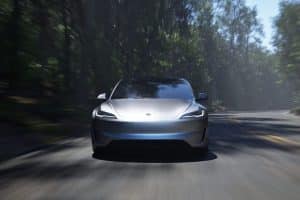Tesla’s pricing strategy comes down to one key difference from its competitors, and as the automaker recently cut pricing for the fifth time this year, the method to its madness is being further examined.
Tesla’s most recent price cuts on Friday are a far cry from its most drastic, which came in January after the Model Y was discounted by $13,000, nearly 20 percent on some trim levels.
While legacy automakers are not prone to cut prices by that much, Barron’s notes in a recent article that substantial price cuts for these companies are usually $1,000, and not the $13,000 that Tesla is able to apply to its vehicles because of its dealership model:
“Tesla, of course, doesn’t have a traditional dealer network. It is both car maker and car dealer. That is one reason investors should expect more volatility from Tesla versus its competition. All of its discounts are visible. Dealer-related discounts rarely rise to become investor-level news.”
Tesla customers have a distinct advantage in terms of consumerism, as they avoid basically the most stressful part of car buying, and that’s pricing. All too often, people who are at dealerships to buy a car are stuck wondering if someone else bought the same model for a lesser price, if they should have haggled more, and if there was more negotiating to be done.
The direct-to-consumer model has changed this.
The dealership model is not the only reason for the price cuts, but it is one major influence. Legacy automakers like Ford and GM are often cutting prices to clear their lots, bringing new vehicles to their inventories, and generating revenue for the larger corporation.
The reasoning for Tesla’s massive price cuts all depends on who you ask. Some analysts will say it is to recapture market share, and Tesla has the ability to control prices to manipulate competitors and consumer interest in their products. Others will say it is to counter weakening demand, although Tesla’s delivery figures increase quarter-over-quarter regularly.
Tesla can almost utilize its price cuts as a PR campaign. Meanwhile, an example of a BMW iX being cut by $10,000 without the customer asking was told by auto analyst Mike Ward. These stories do not make it to the media.
Meanwhile, Tesla’s price cuts apply to everyone and these broad market adjustments make for mass exposure, showing the company reduces prices.
“I assume Tesla’s strategy is based on the assumption of customer retention,” Nicholas Colas of DataTrek said. “Car buyers are a notoriously fickle lot, with only about 50 percent brand loyalty at the next purchase. Maybe a new technology like EVs is different, with higher retention.”
Lower prices will impact Tesla’s margins, which are among the strongest in the industry. However, more important is the retention of its customer base and a growth in sales as it still is only delivering a fraction of what legacy automakers will this year, even if their figures count ICE vehicles.





